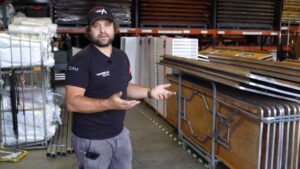Note: The following article was featured in the November/December issue of Pro Contractor Rentals.
Data. Sophisticated rental stores demand it, and even those who haven’t felt the need for it until recently are recognizing they need it to stay competitive. Contractors can be sitting at home at 10 p.m., preparing for their next contract, wondering: “What do I have on rent? What equipment is on this job site? How much is this costing? What’s the availability on that machine?” They don’t want to wait until tomorrow to be able to submit a bid. And they want to know where they’re maximizing their machine use on job sites and which equipment they should probably return until they’re ready for it.
That’s where rental companies are headed in 2016 – thousands have already started the conversion to rental software; those that have converted are working on maximizing its effectiveness. Their feedback will help guide future updates. Here’s how:
Step 1: Enter Your Data
The data captured by a rental management system is seamless and easy to access – when there’s a problem, issue, or question, you’re not digging through a stack of paperwork, hoping to find maybe a slip of paper that didn’t get entered. You’re not sending a customer the wrong invoice because a couple of papers got stuck together and one didn’t get processed. You’re clicking on a few tables and seeing all the information you need to know.
When the system is used properly, employees document each step in the rental process in real-time, so they don’t have to keep track of papers or remember to stop by a computer and enter data later. Since it’s in the system immediately, it allows other employees to get an accurate look at what equipment is available, where it is, etc. all from any system-enabled device. With integrations like telematics, employees can go further: They can see whether equipment has maintenance due, how many hours machines are logging, where equipment is – any data tracking equipment and ensuring it’s taken care of. This reduces errors, increases efficiency, and helps employees feel more invested in the business, as they’re responsible for entering their own transactions.
Often, people running businesses don’t think that their employees can handle the responsibility. Every week, our training staff has conversations with business owners saying “you don’t know my employees in the back.” However, you’d be surprised at what your employees could do for you if you put the right tools in their hands. When you have a system set up and each person knows what they’re responsible for, it’s easy to see where the ball is being dropped, so to speak, and correct any issues immediately.
And there’s really no excuse to not enter transactions. When working with something like Rental Expert’s Mobile Workforce, which allows you to assign appropriate levels of access to employees and manage your inventory and equipment from a tablet or cell phone, the “paperwork” is never more than an arm’s reach away. Salespeople can complete contracts out on the lot or on site. Delivery crews can mark items as delivered, picked up, or even take condition photos if something has been damaged. And all that information is automatically updated within the system, meaning everyone else with access to the system can see each update.
Step 2: Protect Your Data
Of course, when you’re entering all the information into one sleek, intelligent system, you need to protect that system. We’ve had customers whose computers got hacked and infected with ransomware who hadn’t run consistent backups, and something that could’ve been fixed in a few hours with a recent backup has taken several months to fix as we try to piece together the history from the files they could find.
Employers also need to consider the levels of access employees are given and implement procedures for granting and revoking system access. There’s no reason that your warehouse crew needs access to accounting functions, for example. Keeping employees’ access in their areas of responsibility will reduce opportunities for errors. That, along with procedures for revoking access, will also protect you from potential damage caused by disgruntled former employees – just like with your warehouse, you definitely don’t want someone who isn’t working for you to have access to your system.
Our products make it easy to assign levels of responsibility, run backups, and ensure your data is protected from many threats, but business owners need to take care of information security within their business as well.
Mobile Workforce and another one of our products, Rental Essentials, are Point of Rental’s responses to our customers’ need to access their business’s data anytime, anywhere. The industry is quickly moving that way, and we’re always working to keep ahead of the curve – our customers want to access their information no matter where they are; they don’t want to be tied to a desktop.
Step 3: Analyze And Act On Your Data
The desire for data doesn’t stop with rental stores. End users are looking for a lot of the same functionality that rental stores have now, and their desire will increase as availability becomes more common. Within our software, we already have customer portals, which allow customers to see their current contracts and what they have out. We already have utilization reports, which tell rental stores which items are being rented at what rates, what kinds of return on investment they’re getting on a per-product basis…but their customers are becoming interested in obtaining that information as well.
The largest rental organizations are already offering these reports; in order to be competitive, rental software will soon help small- and medium-sized rental businesses compete by enabling them to offer the same technological features as the “big guys” while providing the smaller-store customer service that people love.
It’s an exciting time to be in the construction rental industry – we’re all becoming more data-driven and exploring ways to be more efficient and productive than ever. Smart rental software can play a big role in getting you the data you need to make the best decisions for your business.



